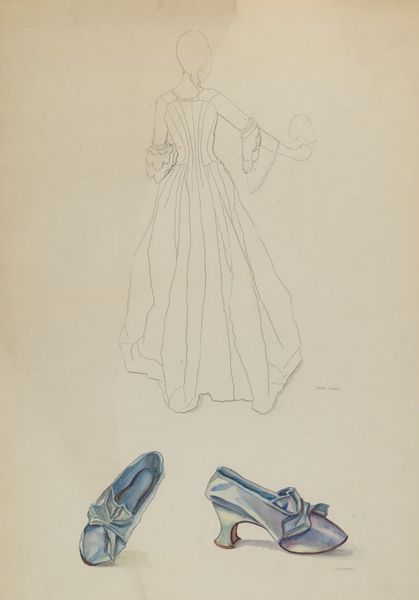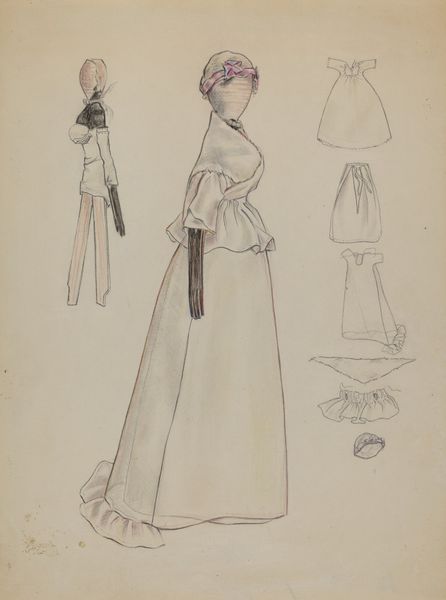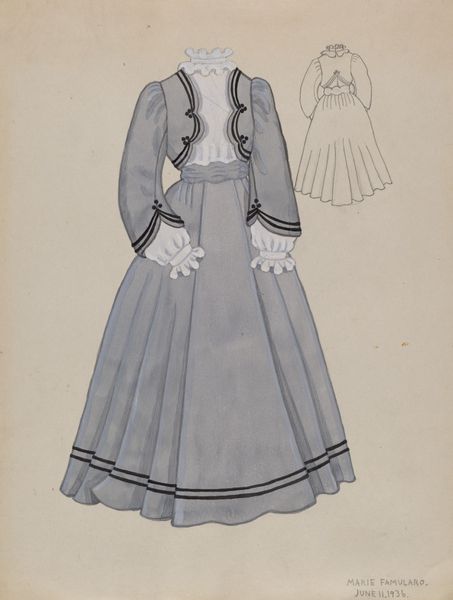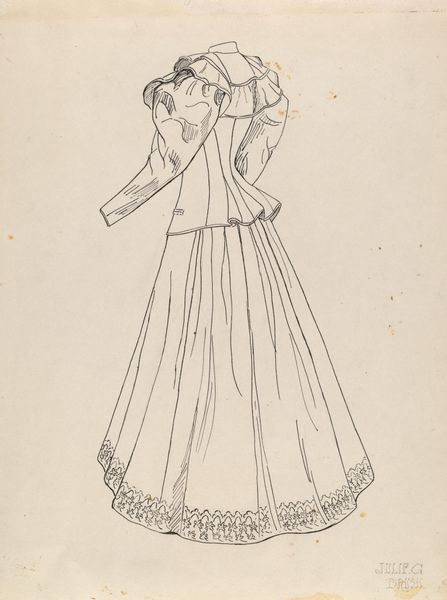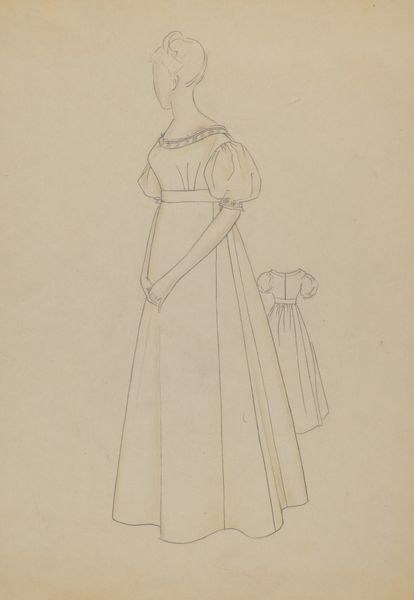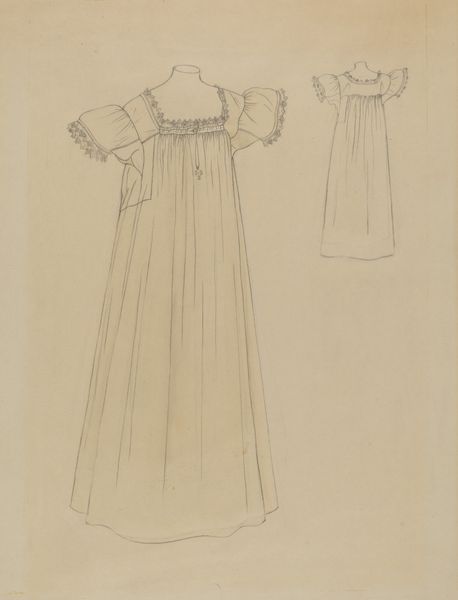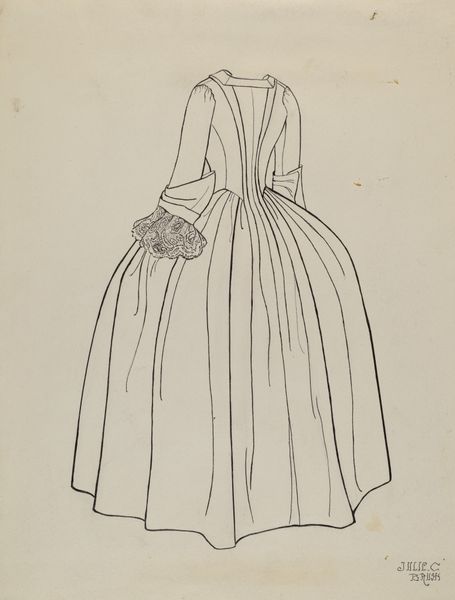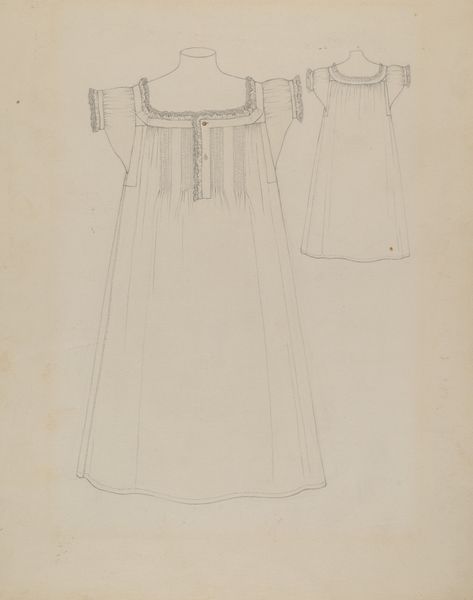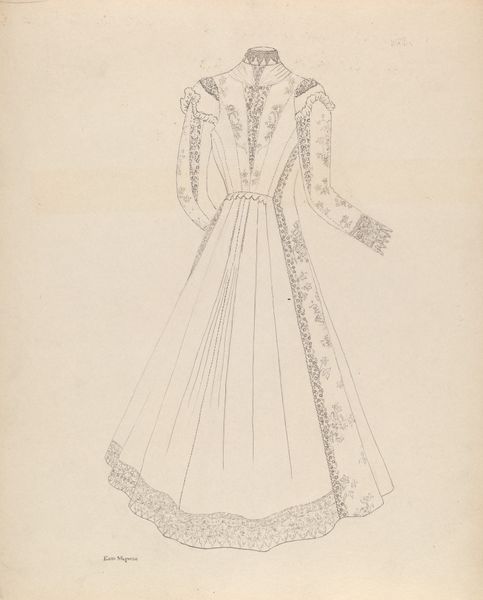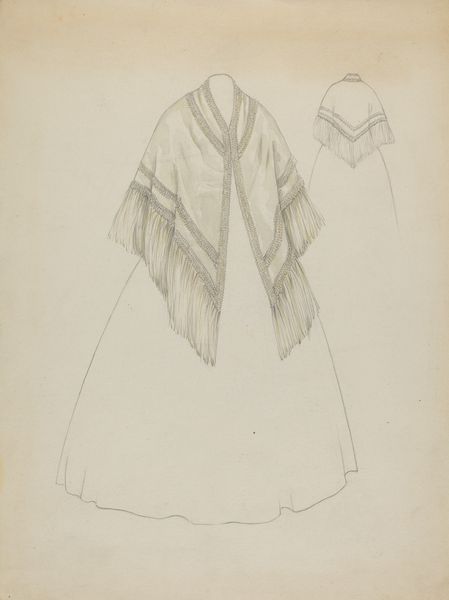
drawing, paper, pencil
#
portrait
#
drawing
#
imaginative character sketch
#
toned paper
#
light pencil work
#
pencil sketch
#
paper
#
personal sketchbook
#
idea generation sketch
#
pencil
#
sketchbook drawing
#
pencil work
#
fashion sketch
#
sketchbook art
Dimensions: overall: 30.2 x 22.3 cm (11 7/8 x 8 3/4 in.)
Copyright: National Gallery of Art: CC0 1.0
Melita Hofmann made this pencil and crayon design for a “Nightgown and Cap” sometime in the mid-20th century. It’s an item that speaks to the shifting social mores around women's fashion and domestic life. Consider the institutional context: Hofmann trained at the Reimann School in Berlin, a private art and fashion school with ties to commercial advertising. Designs like these were made to be sold or licensed to textile manufacturers. By the mid-20th century, ready-to-wear clothing was becoming more common, so there would have been a market for designs for mass-produced sleepwear like this. Notice how the design incorporates elements of both practicality and delicate femininity, revealing how the rise of consumer culture shapes the artistic production. To fully understand art, one needs to look beyond the canvas. Historical sources like fashion magazines, pattern books, and company records help us situate designs like this within the broader culture and economy of their time. In doing so, we realize how art is not made in isolation, but is deeply embedded in the fabric of society itself.
Comments
No comments
Be the first to comment and join the conversation on the ultimate creative platform.
